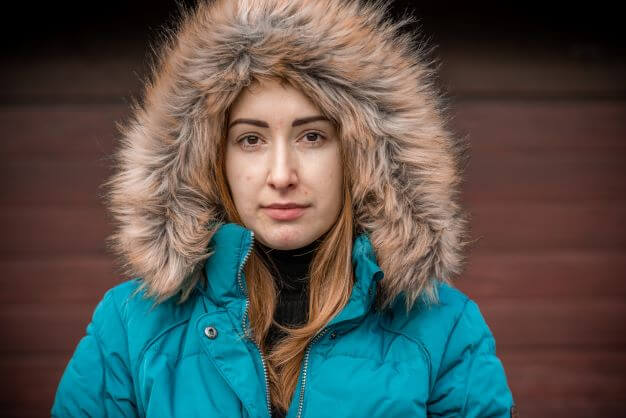Most people think of acne as being something that is more common in the hot, humid summer months when it’s difficult to keep skin clean and free from the oily buildup that can trigger acne breakouts. However, this is not always the case. According to Dr. Maeve Maher of U.S. Dermatology Partners in Leawood, Kansas, and Lee’s Summit, Missouri, “Many people experience more severe acne in the winter. The dry weather, use of skin-dehydrating heaters, and other factors can all make acne breakouts more severe and difficult to treat.” In this blog, Dr. Maher explains everything you need to know about winter acne and how to treat and prevent this seasonal skin condition.
What Is Winter Acne?
Winter acne is the name given to seasonal acne that is more severe or more challenging to manage during the winter months. Dr. Maher says, “Most people associate summertime skin health with sweating, lots of sunscreen, and maybe exposure to chemicals in bug spray, swimming pools, and other areas. They assume this means their acne will be more severe. Actually, the excessive dryness in the winter can cause more severe acne breakouts, and many people struggle to heal and maintain clear skin during the winter. The real concern with winter acne is treatment. Unlike summertime when humid air and oiliness make using skin-drying, acne-fighting products effective, winter acne may be exacerbated by using drying acne treatments like benzoyl peroxide, salicylic acid, and retinoids. Everyone should adjust their skincare routines for the change in season, but this may be even more important for people who struggle with winter acne.”
When Does Winter Acne Occur?
According to Dr. Maher, “Winter acne, as the name implies, is a seasonal form of acne that occurs in the winter months. Specifically, winter acne is most likely to occur when temperatures remain at or below freezing for several days or weeks in a row, especially if humidity levels are also very low.”
Why Does Winter Acne Occur?
In general, winter is tough on the skin. The cold, wind, rain, snow, and lack of humidity (both indoors and out), can all strip moisture from the skin. When skin is dry, the body produces additional sebum, the oil secreted by our glands to keep skin hydrated. Too much sebum oil production can cause dead skin cells and acne bacteria to be trapped beneath the skin, leading to the development of blemishes.
Increasing dryness in winter air outdoors and the use of heaters and hotter showers stripping moisture from skin indoors also makes the skin’s protective barrier more likely to become damaged, which can increase inflammation and irritation. Excessive skin dryness weakens the skin’s ability to fight off the bacterial infections often connected to acne breakouts. Dry skin may peel or flake, making it more likely for pores to become clogged if these larger flakes of skin are not shed quickly.
In addition to the impact of the weather and environment on the skin, changes in habits during the winter may also be a factor in more frequent or severe acne breakouts. According to Dr. Maher, “Winter is also a time when many people celebrate holidays. These holiday celebrations often include changes in diet, added stress, and less consistency with skincare routines. This combination can be extremely detrimental to those with acne-prone skin who are already struggling with breakouts caused by increased dryness.”
Where Does Winter Acne Appear on the Body?
Like other forms of acne, winter acne breakouts are most common on the face. Specifically, winter acne typically impacts the T-Zone (forehead, nose, and chin) where there are more oil-producing glands. While winter acne is most common on the face, acne breakouts can occur on other parts of the body. Many people who only have winter acne may be more likely to experience breakouts on other parts of their bodies, including the shoulders, chest, back, neck, and arms. Even patients who don’t typically have acne breakouts on other parts of their bodies may experience winter acne flare-ups on their faces and other parts of their bodies.
Who Is Impacted by Winter Acne?
According to Dr. Maher, “People who already have acne-prone skin are the most likely to experience winter acne breakouts, but those who don’t struggle with acne regularly may also be more likely to notice blemishes during the winter. The change in weather will dry the skin and cause the same issues for people who don’t usually struggle with blemishes and breakouts. For this reason, everyone should take the appropriate steps to keep skin hydrated and healthy during the winter to minimize the risk of breakouts.”
How Do You Prevent & Treat Winter Acne Breakouts?
When it comes to treatment for winter acne, Dr. Maher recommends, “If you struggle with acne-prone skin, talk to your dermatologist and create a plan to transition to a winter skin care routine before you have a breakout. For those who don’t typically have acne, take steps to address acne at the first signs of breakouts.” A recommended wintertime acne skin care routine should include the following:
- Layer moisturizers – Thick, cream-based moisturizers can still increase the risk for breakouts in those who have acne-prone skin. Rather than slathering on a layer of thick moisturizer, try to use a few layers of lighter moisturizers. Your dermatologist can help you find specific products, but in most cases, you’ll want to find oil-free and non-comedogenic (not acne-causing) moisturizers that contain ingredients like hyaluronic, glycolic, and lactic acid, which are humectants that help draw moisture into the skin.
- Change when you moisturize – Rather than just applying moisturizer at the end of your skin care routine, apply moisturizer immediately after washing and at the end of your daily routine. This helps to trap in any moisture from the water after cleansing. It also helps to soothe irritation that may occur. Once the moisturizer is absorbed into the skin, apply your other skin care products. Then, apply another gel or lotion-based moisturizer. You should also apply moisturizer to your face and body any time you take a bath or shower.
- Take a look at your cleanser – During the summer months when skin is oily and the weather is more humid, you might use a facial cleanser that removes oil, reducing the risk for acne breakouts. In the wintertime, these cleansers may be a bit too harsh and drying. Look for a gentle facial cleanser that’s recommended for sensitive skin. These are typically the best options to reduce risk for causing unnecessary irritation. Switching from a foaming to a cream cleanser may also be a good option.
- Clean skin less often – Every time you clean your skin, moisture is removed, especially if you use hot water. During the wintertime, you should not need to wash your face or body as frequently, even if you have an active breakout. Overcleaning can prolong or exacerbate breakout symptoms. Don’t wash your face more than twice a day, and consider taking baths and showers less frequently.
- Minimize acne-fighting topicals – Ingredients like salicylic acid and benzoyl peroxide are often found in cleansers and other skin care products that are formulated to fight acne. While these ingredients help break down oils that clog pores, they can also strip away moisture. During the wintertime, use these products sparingly. If you have an active breakout, switch to spot treatments and apply a small amount directly to blemishes rather than treating the entire face or areas where you are not experiencing a breakout.
- Don’t stop exfoliating – Dryness often means thick, flaky skin, which can clog pores. Use a gentle, chemical exfoliating product like a retinol or salicylic acid to remove excess dry skin and minimize the risk of breakouts. Always apply a moisturizer after exfoliating.
- Don’t skip your sunscreen – Even when it’s cold outside, the sun can still damage your skin and make acne breakouts worse. So, apply a broad-spectrum sunscreen of SPF 30 or higher every day.
- Don’t touch your face or other affected areas – Avoid picking at your skin or popping blemishes, which can increase irritation and inflammation as well as make infection more likely. Touching your face or areas with blemishes can transfer bacteria, grease, and other irritants onto the skin, so try to avoid touching your skin during breakouts whenever possible.
According to Dr. Maher, “If making changes in your routine to prevent breakouts isn’t helping, it’s time to consult with a dermatologist. They can help you find better skincare products, tweak your daily care routine, or provide in-office treatments.”
When Is it Time to Visit a Dermatologist for Help with Winter Acne?
If winter acne becomes very severe or doesn’t respond to treatment, it may be time to visit with the knowledgeable dermatologists at U.S. Dermatology Partners to develop a personalized treatment plan to address your acne breakouts in the winter and all year long. When you’re ready to get started working with one of our local dermatology practices, simply take a few moments to complete our online scheduling request form. Once we receive your request, one of our local team members will be in touch to finalize the details of your visit. We look forward to hearing from you soon.
Find a location near me
or


